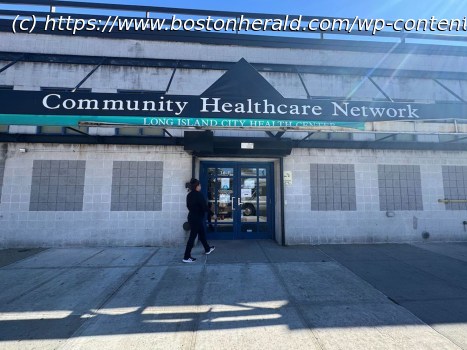Half of community health centers have fewer than 90 days of cash on hand.
On a busy street in Queens, New York, just around the corner from a halal hot chicken sandwich restaurant and a barber shop, the Long Island City Health Center welcomes its patients into a brightly lit waiting room, painted baby blue and filled with soft white and gray seats.
A woman working behind the desk on a recent weekday answered one patient’s questions in Spanish. Other patients came dressed in hijabs, kurtas or other traditional clothing from countries around the globe. A caseworker assigned to the center rolled one woman, wheelchair-bound because of a stroke, toward an examination room.
The Long Island City Health Center is part of a national network of more than 1,300 community health centers, safety-net clinics that served more than 31 million patients in 2023, according to KFF, a health research nonprofit. The clinics are located in areas where there aren’t many doctors or hospitals, and they provide care to all patients, regardless of their ability to pay.
Thanks largely to their broad reach, the centers have long enjoyed bipartisan support. But the federal government shutdown, freezes to federal grants, looming cuts to Medicaid and new Trump administration policies barring some immigrants from receiving care at the centers have put them under financial stress.
Community health centers disproportionately serve low-income people, people of color and rural residents. In 2023, 90% of patients had incomes at or below 200% of the federal poverty level, according to KFF. Forty percent of patients were Hispanic, 17% were Black and 31% were rural residents.
More than 80% of patients were insured, and about half of all patients were covered by Medicaid.
The health centers are funded by the payments they get from Medicaid, Medicare and private insurers, plus federal and state grants. Money is always tight, but between 2010 and 2023, average operating margins remained in the black. That changed last year, as the average margin dipped to -2.1%, according to an audit conducted by the National Association of Community Health Centers.
Half of community health centers have fewer than 90 days of cash on hand, and one-quarter operate with margins below -4%, according to the audit.
When the Trump administration froze some federal grants in February, it forced some clinics, particularly in rural areas, to reduce hours or shut down. The broad domestic policy law President Donald Trump signed July 4 is projected to increase the number of uninsured patients seeking care at the health centers. And the ranks of the uninsured would grow further if Affordable Care Act insurance plans get much more expensive at the end of this year, as would happen if Congress fails to extend tax credits that have kept prices down.
Meanwhile, the government shutdown has prevented Congress from renewing the Community Health Center Fund, which expired on Sept. 30 and provides about 70% of the centers’ federal funding. And the centers worry that a new Trump administration policy barring them from providing care to some immigrants would force them to dedicate scarce resources to verifying patients’ legal status. A federal judge has temporarily blocked the change.
Andrew G. Nixon, director of communications for the U.S. Department of Health and Human Services, told Stateline that the administration is “fully committed to protecting America’s community health centers, which play a vital role in serving millions of families nationwide.”
“The Trump Administration is working to reopen the government and restore full funding, while also ensuring that federal resources are prioritized for American citizens and lawful residents in accordance with the law,” Nixon said in an emailed statement.






